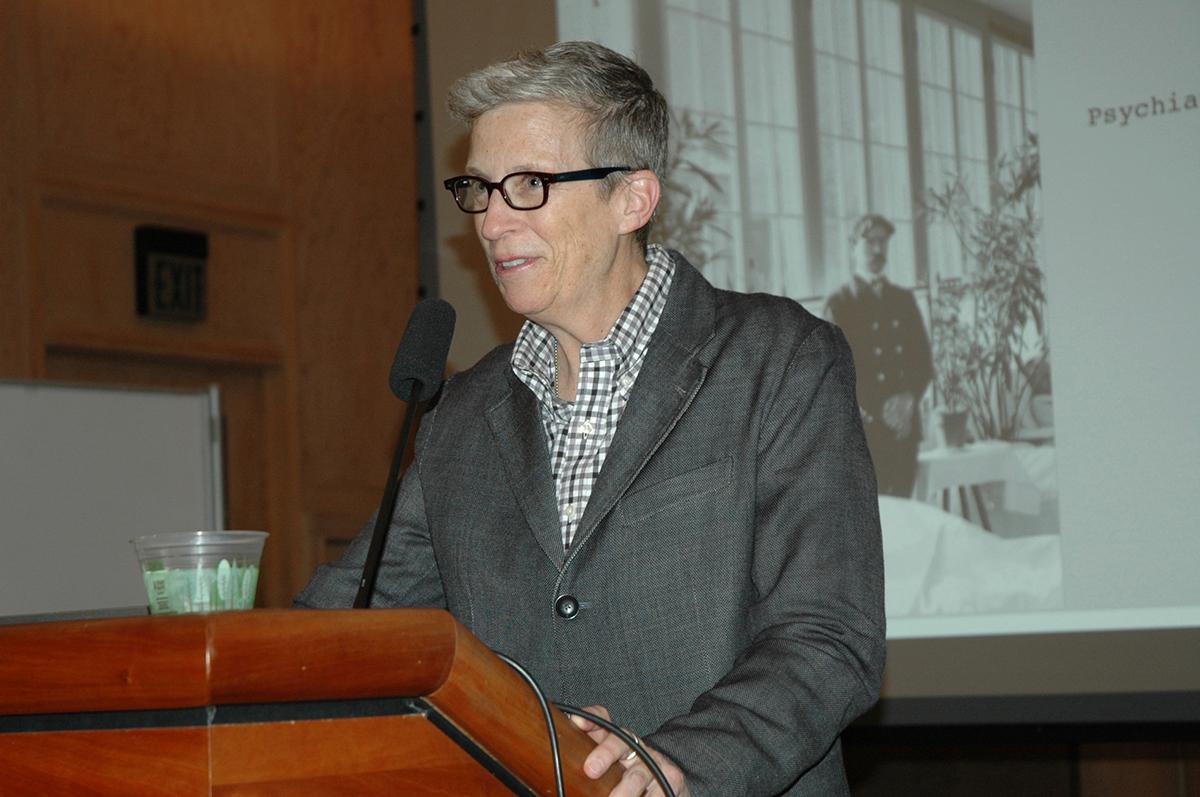
Coauthored by Kenneth Surles, Anniston Ward, and Ryan Murphy
When the Center for the Study of Women in Society invited Regina Kunzel to give a lecture at the University of Oregon, students and faculty had an exciting opportunity to hear from one of the leading scholars in the field of LGBT/Queer history. Her work on the history of sexuality in carceral spaces has opened up new ways of thinking about the institutional power required to maintain normative alignments of sex, gender, and sexuality. I was delighted that Kunzel’s visit coincided with the week I planned to cover queer theory in my WGS 101: Introduction to Women’s and Gender Studies class. I asked students who attended to reflect upon the value of using queer theory as an analytical framework to understand the experiences of LGBT/Queer people institutionalized at Saint Elizabeth’s Hospital in the mid-twentieth century. Anniston Ward and Ryan Murphy helped co-author an insightful essay on how queer patients resisted attempts by the psychiatric community to define queer sexuality and gender nonconformity as a mental disorder. — Kenneth Surles, graduate instructor
Regina Kunzel’s lecture on the psychoanalytic treatment queer patients underwent at Saint Elizabeth’s Hospital in Washington, D.C. in the 1930s to 1960s was a haunting reminder of the power of medical institutions to survey and contain sexuality. As Kunzel explained, the psychiatric community contributed to society’s deep hostility towards LGBT/Queer people by defining homosexuality as a mental disorder in need of a cure. The American Psychiatric Association did not remove this classification from the Diagnostic and Statistical Manual of Mental Disorders (DSM) until 1973. While we often attribute this achievement to changing social norms and the development of a politically active LGBT/Queer movement, Kunzel’s lecture showed that we should also consider how queer patients institutionalized in psychiatric hospitals directly challenged heterosexism in the medical community.
Queer people were institutionalized at Saint Elizabeth’s for a number of reasons including self-admission after an emotional breakdown or involuntary court order initiated by family members or law enforcement. Dr. Kartman, Chief Psychiatrist at Saint Elizabeth’s Hospital, gave incoming patients journals with the instruction to write freely about their sexual desires and dreams.
Queer patients knew that Dr. Kartman was using these journals as a form of psychoanalytic therapy to “cure” their alleged pathological desires, but many reappropriated them into tools of resistance by writing confidently about their sexual desires and gender identity. For instance, one patient wrote that it was an accident of sex that made her born a boy and hoped that one day she could change her body to match her gender. Patients also logged with vivid detail the sexual encounters they had with other patients and hospital staff within the walls of the hospital. One patient used their journal to directly challenge the presumed authority of heterosexual psychiatrists to understand homosexuality. In response to Dr. Kartman’s instructions to explain their sexuality, they wrote, “My imagination is attacking your question . . . homosexual psychology will never be complete or accurate unless a homosexual psychiatrist studies it.”
Kunzel emphasized the importance of “reading against the grain” when conducting research on sexuality, as the traces left behind about queer people have historically been authored by those who policed and judged them. For instance, Dr. Kartman wrote in his notes that “the majority of homosexual patients are beyond cure.” Read against the grain, in the context of the journal entries by queer patients, scholars could interpret this source as evidence that Dr. Kartman began to reconsider psychoanalytic therapy as an effective form of treatment for homosexuality, or even an early sign of psychiatry’s shift away from defining homosexuality as a mental disorder. It would be worthwhile to investigate the collection for additional evidence to support this interpretation.
Despite the power imbalance between doctors and patients, the journals provided queer people with an opportunity to articulate their sexuality and gender difference in positive and life-affirming ways, and in doing so, they challenged the diagnosis that queer sexuality and gender is a mental disorder.
Kunzel’s research reinforces a fundamental tenet of queer theory: we must shift away from a politics of acceptance where tolerance for same-sex sexuality is predicated upon gay men and lesbians being read as otherwise “normal” in gender expression, sexual behavior, family composition, and class status. Even as public opinion has turned more in favor of protections for LGBT/Queer Americans, conversion therapy is still a traumatic reality for many LGBT/Queer youth.
Kunzel’s lecture is a stark reminder that queer activists and their allies must remain vigilant and challenge institutional practices that relegate queer sexuality and gender to the margins.
— Kenneth Surles is a doctoral candidate in the Department of History and a graduate employee teaching in the Department of Women’s, Gender, and Sexuality Studies. Anniston Ward is an undergraduate pre-journalism major enrolled spring term in WGS 101. Ryan Murphy is an undergraduate student enrolled spring term in WGS 101.

